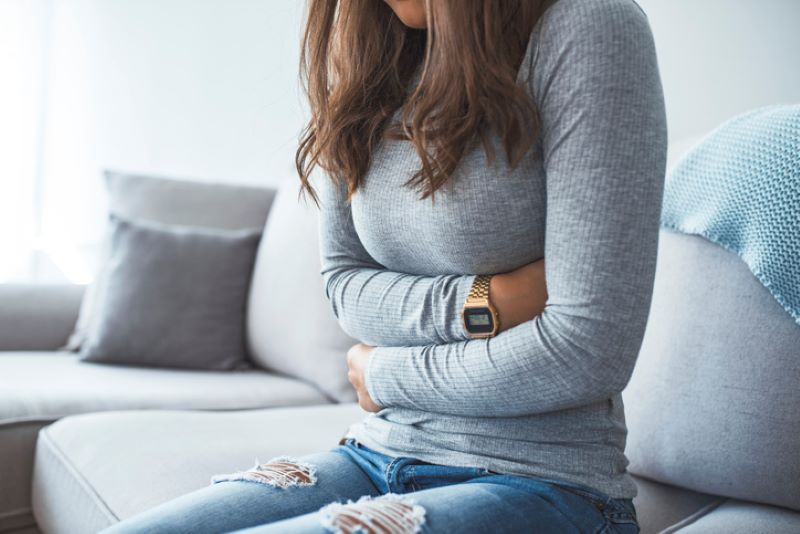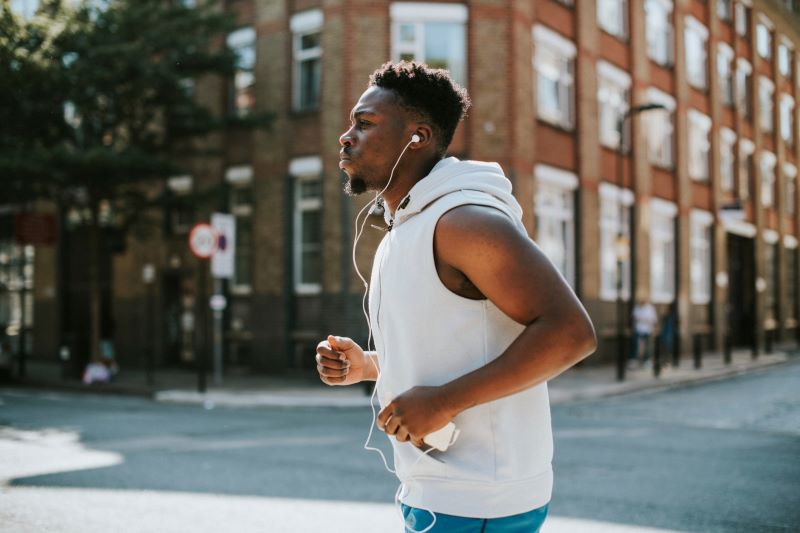
Past research has indicated that eating disorders and sexual disorders are more prevalent in women than in men. Moreover, eating disorders and sexual disorders have been shown to co-occur in individuals, meaning that a person can have both conditions at the same time. (When two or more medical conditions occur in an individual at the same time, they are known as comorbid conditions).
Although growing empirical evidence supports the association between eating disorders and sexual disorders, less is known about how often these two conditions co-occur and how/why they co-occur.
One predominant theory as to why eating disorders and sexual disorders co-occur has to do with body image. The idea that poor body image could lead to developing an eating disorder through body dissatisfaction and a drive for thinness and/or lead to a sexual disorder through sexual self-consciousness makes sense intuitively. Nevertheless, the relationship between body image and the co-occurrence of eating disorders and sexual disorders has not been thoroughly researched. As such, experts are careful not to draw conclusions about its possible role in the comorbidity of these two conditions.
The authors of a recent Journal of Sexual Medicine publication explored body image and the co-occurrence of eating disorders and sexual disorders in an anonymous survey of 985 women in Israel, which was available online between the dates of December 2019 – February 2020. In contrast to many of the previous studies on the topic which generally looked at clinical samples, the authors intentionally sought a large non-clinical sample of women.
For the purposes of this study, sexual disorders were assessed through the Arizona Sexual Experiences Scale (ASEX), which is a 5-item tool that evaluates key components of sexual function including sex drive, arousal, vaginal lubrication, and ability to orgasm. Eating disorders were measured through the Eating Disorders Inventory 2 (EDI-2), which explores and quantifies attitudes and behaviors related to anorexia and bulimia through the three subscales of “drive for thinness,” “bulimia,” and “body dissatisfaction.” Finally, body image was evaluated through the Body Image Self-Consciousness Scale (BISC), a 15-item questionnaire that investigates women’s body image concerns during sexual activity with statements such as: “While having sex, I am concerned that my hips and thighs will flatten out and appear larger than they actually are. Rate from 1 (never) to 6 (always).”
In the end, based on the ASEX and EDI-2’s respective cut-offs for sexual disorders and eating disorders, the survey participants fell into one of four groups: “no disorder” (54.6%), “eating disorders” (29.7%), “comorbidity” (11.4%), and “sexual disorders” (4.3%).
Just over one in ten women in the study were identified as comorbid, meaning that they had symptoms of both sexual disorders and eating disorders. Interestingly, the authors found that the women in the “comorbidity” group experienced significantly more body image self-consciousness during sexual encounters than the women in the other groups did. This finding may lend support to the hypothesis that poor body image could contribute to both eating disorders and sexual disorders, potentially because a person cannot be fully present during a sexual experience when she is fixated on concerns about her own body or appearance.
Another interesting result of the study was that while the women who demonstrated eating disorder symptoms did not always have sexual disorders, most of the women with sexual disorders had eating disorder symptoms. This finding could be significant for patients who are seeking support for sexual disorders, in case they could benefit from seeking support for eating disorder symptoms as well.
Resources:
Gewirtz-Meydan, A., & Spivak-Lavi, Z. (2021). Profiles of Sexual Disorders and Eating Disorder Symptoms: Associations With Body Image. The Journal of Sexual Medicine, 18(8), 1364-1373. https://www.jsm.jsexmed.org/article/S1743-6095(21)00528-2/fulltext.
You may also be interested in...
Other Popular Articles

What Is the Average Penis Size?
If you have ever wondered how your penis compares to others in terms of size, you are not alone. Many men are curious to know how their penises stack up compared to the average. Unfortunately, general curiosity can sometimes give way to full-on obsession and anxiety about penis size. This can be an unhealthy and often unnecessary fixation, especially because most men who think their penises are too small have perfectly normal-sized penises.

What Is Jelqing, and Does It Actually Work?
The term “jelqing” refers to a set of penis stretching exercises that some believe can make the penis bigger. Although the practice has gained attention and popularity in blogs and internet forums in recent years, there is no scientific evidence that it is an effective way to permanently increase the size of one’s penis. In fact, in some cases, jelqing may actually cause damage to the penis, so it is a good idea to get all the facts before setting off to try it.

What Is Sensate Focus and How Does It Work?
Sensate focus is a technique used to improve intimacy and communication between partners around sex, reduce sexual performance anxiety, and shift away from ingrained, goal-oriented sexual patterns that may not be serving a couple.

Can Sex Reduce Menstrual Cramps?
The SMSNA periodically receives and publishes ‘guest editorials.’ The current article was submitted by Mia Barnes, a freelance writer and researcher who specializes in women's health, wellness, and healthy living. She is the Founder and Editor-in-Chief of Body+Mind Magazine.
Having sex while you experience menstrual cramps is healthy and can provide significant benefits. While it might not be the first activity that comes to mind when your PMS or period cramping begins, many people enjoy sex to reduce menstrual cramps, experience increased pleasure and benefit from other advantages. Learn more about having sex while menstrual cramps are happening and how it can help your body.

How Long Does It Take the Average Man to Ejaculate?
On average, it takes a man between 5 to 7 minutes to orgasm and ejaculate during sexual intercourse.

The Effect of Regular Aerobic Exercise on Erectile Function
Erectile dysfunction (ED) is the inability to achieve or maintain an erection sufficient for satisfactory sexual activity. As men get older, their erectile functioning may naturally decline due to changes in testosterone levels, cardiovascular functioning, and the potential development of other chronic medical conditions that become more common with age.

